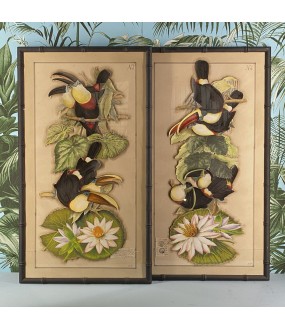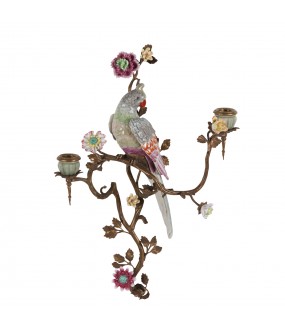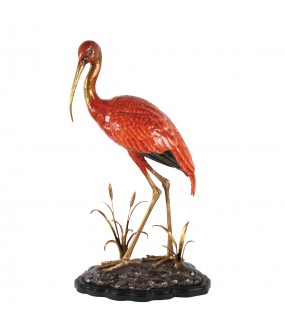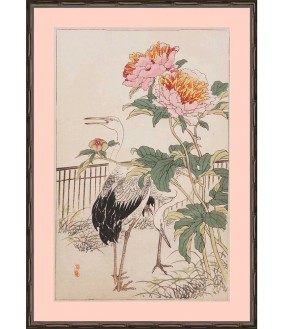Eclectic Chic
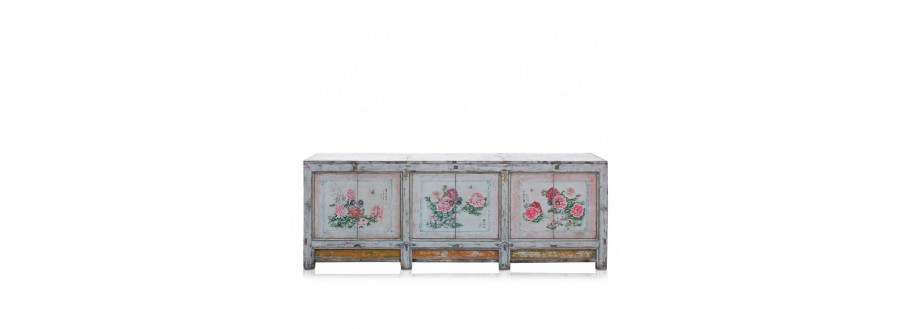
-

New Items
-

Furniture Design and Artistic Creations
-

Dining Tables
-

Dining Tables - Coffee Tables - Side Tables - Consoles - Columns
-

Seating
-

Luxury Handcrafted Rattan Seats
-

Mirrors
-

Lighting
-

Storage & Headboard
-

Home Accessories
-

Objects of Curiosities and Naturalia
-

Greco Roman Art
-

Ethnic Art from Africa, Asia-Pacific & Americas
-

Wall Art Decor
-

Rugs & Cushions
-

Vintage Furniture
-

Louis Vuitton Trunks
-

Outdoor - Jardin
Active filters
-
Chair in Rattan Albertine, Made on Demand
€1,032.00The Albertine rattan chair.
Superb handcrafted rattan chair, made to order and which can be woven in your colors on request.
It is stackable, robust and light, CHR furniture par excellence.
The Albertine chair is one of the essential rattan chairs that adorns Parisian, Eastern and Western terraces.
Price upon request.
This cane chair is ideal for your terrace, in your garden but also for your interior.
Very comfortable, this beautiful chair is light and very resistant.
This chair will beautify your living room, your kitchen, your terrace, your veranda or your restaurant.
A magnificent French artisanal creation, entirely handmade.
Type: chair with 45cm wide seat
Stackability: stackable
Indoor/Outdoor: Semi-outdoor
Fiber: Brilliant (Rilsan)
Colors: Glossy Burgundy and Glossy Cream
Structure materials: Dark rattan (Malacca)
Weaving range: Classic
Seat height: 45cm
Overall height: 78cm
Overall width: 45cm
Overall depth: 51cm
Weight: 5kg
Varnish and paint: Varnish
Rattan, a material with extraordinary properties with limits.
Rattan is a vine of the Palm race, which grows in very humid or even marshy Equatorial forests.
With its glass-like siliceous skin, this extremely strong and light vine is particularly resistant to humidity, as are tropical woods, teak or others.
But this resistance has limits. Exposed to rain, rattan resists very well for a whole day or even a few days. But if this rain continues for too many hours, the humidity will gradually penetrate the Rattan, and day after day the material kept wet will end up slowly deteriorating and losing its resistance qualities.
The physical limits of rattan require precautions for use. On the terraces of Parisian cafes, the chairs can last for decades even though they are often in the rain all day for long periods. But they are stacked under cover every evening and can thus dry.
More generally, rattan can withstand rain for long hours without compromising its longevity, but must be able to dry regularly.
In practice, rattan furniture can remain outside throughout the “summer season”, the weather is hot and rather dry, continuous rains exceptionally last more than three or four days and Rattan withstands such rain without deteriorating.
But as soon as the season advances, the temperature drops, and there is a lot of condensation and humidity, the Rattan will gradually become humid, with long, heavy rains accentuating this deterioration. In practice, these are sensitive situations at the seaside.
It is then imperative to place the seats under shelter, a ventilated shelter to avoid progressive humidification as soon as the “bad season” arrives, in practice from mid-October to mid-March for a continental climate.
The alternative if you want to use your rattan furniture all year round is to put it under cover every day, every evening, as the Parisian terraces do.
In summary, 2 main principles to respect:
During the winter season (October 15 to March 15 in Europe) in all climates: furniture must be stored “dry”. It can, however, be left outside during the day, but must be kept dry overnight.
During the “summer season”, the rest of the time, Rattan can remain permanently outside.
However, if there is lasting rain, you should only leave the Rattan in this rain for two or three days at most, before putting the furniture in a dry place so that it can dry. Only take it out once the rain has stopped (In any case, a terrace cannot be used in the rain).
-
Toucans Engravings Made by Collages
€2,990.00A pair of magnificent Toucans engravings made from collages of old juxtaposed engravings which are previously hand painted.
A magnificent artisanal work of remarkable finesse executed in Italy according to an ancestral process.
Within each frame an atmosphere is created by a juxtaposition of exquisite hand engravings which are engraved and printed on vintage presses from the 1800s.
Each image is printed in black and white, individually hand colored with gouache and in watercolor then cut out.
Superb and one of a kind.
-
Colorful Parakeet Wall Candle Holder, Right & Left
€780.00Large wall candle holder with its colorful porcelain parakeet.
Beautiful worked brass stems and white and colored porcelain flowers.
Two wall-mounted candle holders made of porcelain.
A baroque, naturalist and romantic style for this elegant wall candle holder.
Height of 48cm, width 31 cm and depth 12 cm.
Wall hanging is done by the brass rod which is positioned at the back of the parakeet and therefore invisible to the eye.
-
Red Crane in Porcelain and Brass, 70cm high
€2,200.00Superb figurine of a flamboyant red crane made of porcelain and brass, 70cm high and 46cm wide.
A contemporary artisanal work of great beauty.
The bird's legs are made of brass.
A remarkable piece for a refined and unique interior decoration.
-
Engravings by K. Baerei, 19th C. Set of 2
€530.00A set of two beautiful engravings by the 19th century Japanese artist Kono Baerei.
Engravings with black marie-louise and very beautiful frame in aged black wood and gold edging or with a large pink marie-louise and a thin black bamboo imitation frame.
Glass size: 55x80cm
Engravings representing cranes and beautiful peonies under glass.
Bairei became a student of the Maruyama school painter Nakajima Raishō at the age of eight, and then a student of the Shijō school painter Shiokawa Bunrin at the age of twenty-seven. He continued his education in the Nanga school style under Nakanishi Kōseki and Maeda Chōdō. With Gennyo, abbot of Higashi Hongan-ji, he traveled throughout Kyūshū and central Japan, making numerous drawings.
In 1878, Bairei began preparations for an art school, which opened in 1880 as the Kyoto Prefectural School of Painting. He left this school in 1881 and taught his students in his workshop until 1891. In 1893, he became a member of the Arts Committee of the Imperial Household. In 1894, he was commissioned to paint pieces of Higashi Hongan-ji.
Bairei was a prominent figure in Kyoto's artistic circles, where he organized and promoted artistic activities. He played a particularly important role in his educational work. His many students include Takeuchi Seihō, Kikuchi Hōbun, Kawai Gyokudō.
His own work, often characterized by bold brushstrokes, displays traditional charm and sensitivity.
Its flowers, birds (Kachō-ga), and landscapes show a touch of Western realism. Bairei is also known for his spontaneous woodcut sketches.




